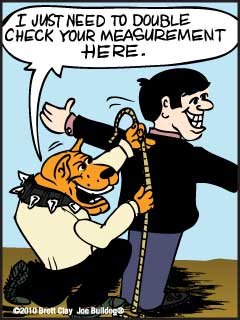Change Leadership — Secret # 82
Measure Twice; Cut Once
More important than the quest for certainty
is the quest for clarity. —Francois Gautier
What I Need to Know |
Remember the saying, “The only thing you can be sure of is death and taxes?” A change leader needs to have a healthy skepticism regarding people’s views and commitments. Webster’s Dictionary defines skepticism as:
1. An undecided, inquiring state of mind
2. The doctrine that no fact or principle can be certainly known; the tenet that all knowledge is uncertain
Healthy skepticism is understanding that everyone sees things differently. It is understanding that the data people provide is just their view of the data. It is understanding that two people think they are saying the same thing, but really may be talking about two entirely different things.
Carpenters have a saying, “Measure twice; cut once.” Nothing is worse than the horrifying feeling of wasting several hours of effort and expensive materials with one erroneous cut. Once the cut is made, it cannot be undone. In change leadership, the equivalent of “measuring twice” is “validating twice.” The equivalent of “cutting” is taking public action. If you take public action, but people disagree, then feelings, relationships, and credibility can all be damaged.
The best approach the change leader can take is to validate and revalidate stakeholder views and commitments—before acting on them.
What I Need to Do |
Become knowledgeable of the host of cognitive biases that can cause stakeholders unwittingly to provide inaccurate data, (e.g., false consensus, rosy retrospection, wishful thinking, anchoring, sustainability, etc.). Then, use this knowledge to identify potentially inaccurate data.
Try to rely on verifiable facts, rather than anecdotal hearsay.
Verification of facts is the easy task. The much harder task is verifying people’s views and, most important, commitments. You do not want to walk into a meeting believing you have someone’s support, only to witness the person supporting the opposite view.
Build a mental dossier on each stakeholder that includes an accounting of trustworthy and untrustworthy actions you have observed from them. If they say or do things that damage other people, you have to assume they will do the same to you.
Limit your exposure to risk and your dependence on people until they have demonstrated their trustworthiness.
Action Summary |
|
 |



Social